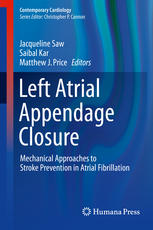

Most ebook files are in PDF format, so you can easily read them using various software such as Foxit Reader or directly on the Google Chrome browser.
Some ebook files are released by publishers in other formats such as .awz, .mobi, .epub, .fb2, etc. You may need to install specific software to read these formats on mobile/PC, such as Calibre.
Please read the tutorial at this link: https://ebookbell.com/faq
We offer FREE conversion to the popular formats you request; however, this may take some time. Therefore, right after payment, please email us, and we will try to provide the service as quickly as possible.
For some exceptional file formats or broken links (if any), please refrain from opening any disputes. Instead, email us first, and we will try to assist within a maximum of 6 hours.
EbookBell Team

4.7
106 reviewsPercutaneous left atrial appendage (LAA) closure is an emerging technology for thromboembolic prevention in patients with atrial fibrillation (AF). The first human implantation of an LAA device occurred in 2001, and since then four devices have received CE mark approval. These devices are being widely used in Europe for LAA closure in patients who are poor candidates for long-term oral anticoagulation. In the US, the WATCHMAN device (Boston Scientific) is anticipated to receive FDA approval imminently for AF patients who are warfarin-eligible. This approval is projected to significantly expand the indications for LAA closures worldwide. Thus, the volume of procedures is anticipated to escalate. This book discusses the epidemiology of AF as a cause of stroke; the use of LAA closure in the reduction of thromboembolism with AF; early surgical approaches and novel surgical devices for LAA closure; and current percutaneous approaches and devices available for LAA closure. The emphasis of this book is on percutaneous technical approaches and contemporary trial results on the leading devices (PLAATO, WATCHMAN, Amplatzer Cardiac Plug, and LARIAT). It also reviews unapproved devices in development, in both clinical and pre-clinical phases.